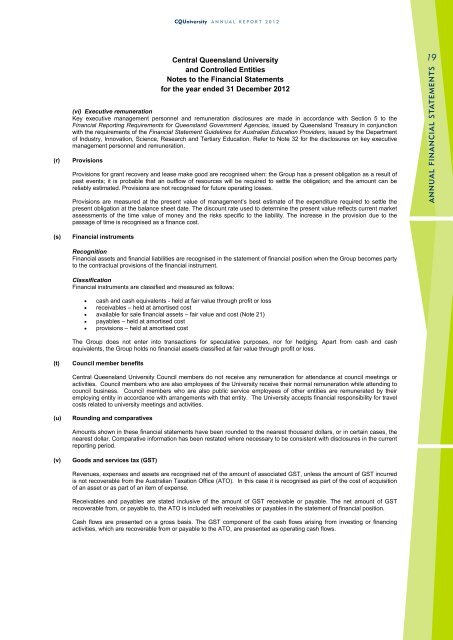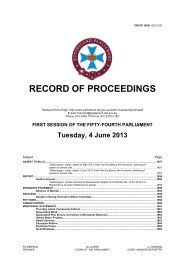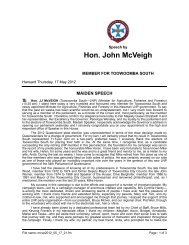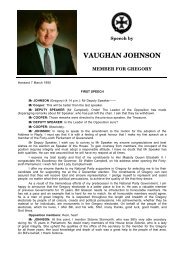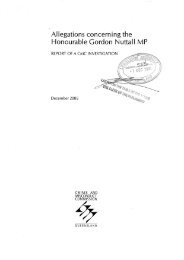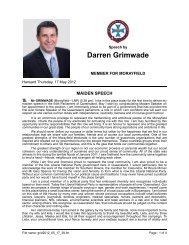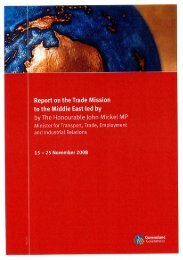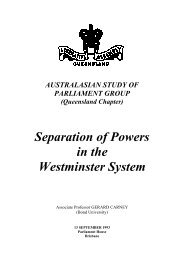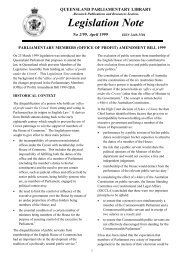CQUniversity Annual Report - Central Queensland University
CQUniversity Annual Report - Central Queensland University
CQUniversity Annual Report - Central Queensland University
You also want an ePaper? Increase the reach of your titles
YUMPU automatically turns print PDFs into web optimized ePapers that Google loves.
<strong>CQ<strong>University</strong></strong> ANNUAL REPORT 2012<br />
(r)<br />
(s)<br />
(t)<br />
(u)<br />
(v)<br />
<strong>Central</strong> <strong>Queensland</strong> <strong>University</strong><br />
and Controlled Entities<br />
Notes to the Financial Statements<br />
for the year ended 31 December 2012<br />
(vi) Executive remuneration<br />
Key executive management personnel and remuneration disclosures are made in accordance with Section 5 to the<br />
Financial <strong>Report</strong>ing Requirements for <strong>Queensland</strong> Government Agencies, issued by <strong>Queensland</strong> Treasury in conjunction<br />
with the requirements of the Financial Statement Guidelines for Australian Education Providers, issued by the Department<br />
of Industry, Innovation, Science, Research and Tertiary Education. Refer to Note 32 for the disclosures on key executive<br />
management personnel and remuneration.<br />
Provisions<br />
Provisions for grant recovery and lease make good are recognised when: the Group has a present obligation as a result of<br />
past events; it is probable that an outflow of resources will be required to settle the obligation; and the amount can be<br />
reliably estimated. Provisions are not recognised for future operating losses.<br />
Provisions are measured at the present value of management’s best estimate of the expenditure required to settle the<br />
present obligation at the balance sheet date. The discount rate used to determine the present value reflects current market<br />
assessments of the time value of money and the risks specific to the liability. The increase in the provision due to the<br />
passage of time is recognised as a finance cost.<br />
Financial instruments<br />
Recognition<br />
Financial assets and financial liabilities are recognised in the statement of financial position when the Group becomes party<br />
to the contractual provisions of the financial instrument.<br />
Classification<br />
Financial instruments are classified and measured as follows:<br />
cash and cash equivalents - held at fair value through profit or loss<br />
receivables – held at amortised cost<br />
available for sale financial assets – fair value and cost (Note 21)<br />
payables – held at amortised cost<br />
provisions – held at amortised cost<br />
The Group does not enter into transactions for speculative purposes, nor for hedging. Apart from cash and cash<br />
equivalents, the Group holds no financial assets classified at fair value through profit or loss.<br />
Council member benefits<br />
<strong>Central</strong> <strong>Queensland</strong> <strong>University</strong> Council members do not receive any remuneration for attendance at council meetings or<br />
activities. Council members who are also employees of the <strong>University</strong> receive their normal remuneration while attending to<br />
council business. Council members who are also public service employees of other entities are remunerated by their<br />
employing entity in accordance with arrangements with that entity. The <strong>University</strong> accepts financial responsibility for travel<br />
costs related to university meetings and activities.<br />
Rounding and comparatives<br />
Amounts shown in these financial statements have been rounded to the nearest thousand dollars, or in certain cases, the<br />
nearest dollar. Comparative information has been restated where necessary to be consistent with disclosures in the current<br />
reporting period.<br />
Goods and services tax (GST)<br />
Revenues, expenses and assets are recognised net of the amount of associated GST, unless the amount of GST incurred<br />
is not recoverable from the Australian Taxation Office (ATO). In this case it is recognised as part of the cost of acquisition<br />
of an asset or as part of an item of expense.<br />
Receivables and payables are stated inclusive of the amount of GST receivable or payable. The net amount of GST<br />
recoverable from, or payable to, the ATO is included with receivables or payables in the statement of financial position.<br />
Cash flows are presented on a gross basis. The GST component of the cash flows arising from investing or financing<br />
activities, which are recoverable from or payable to the ATO, are presented as operating cash flows.<br />
19<br />
ANNUAL FINANCIAL STATEMENTS


